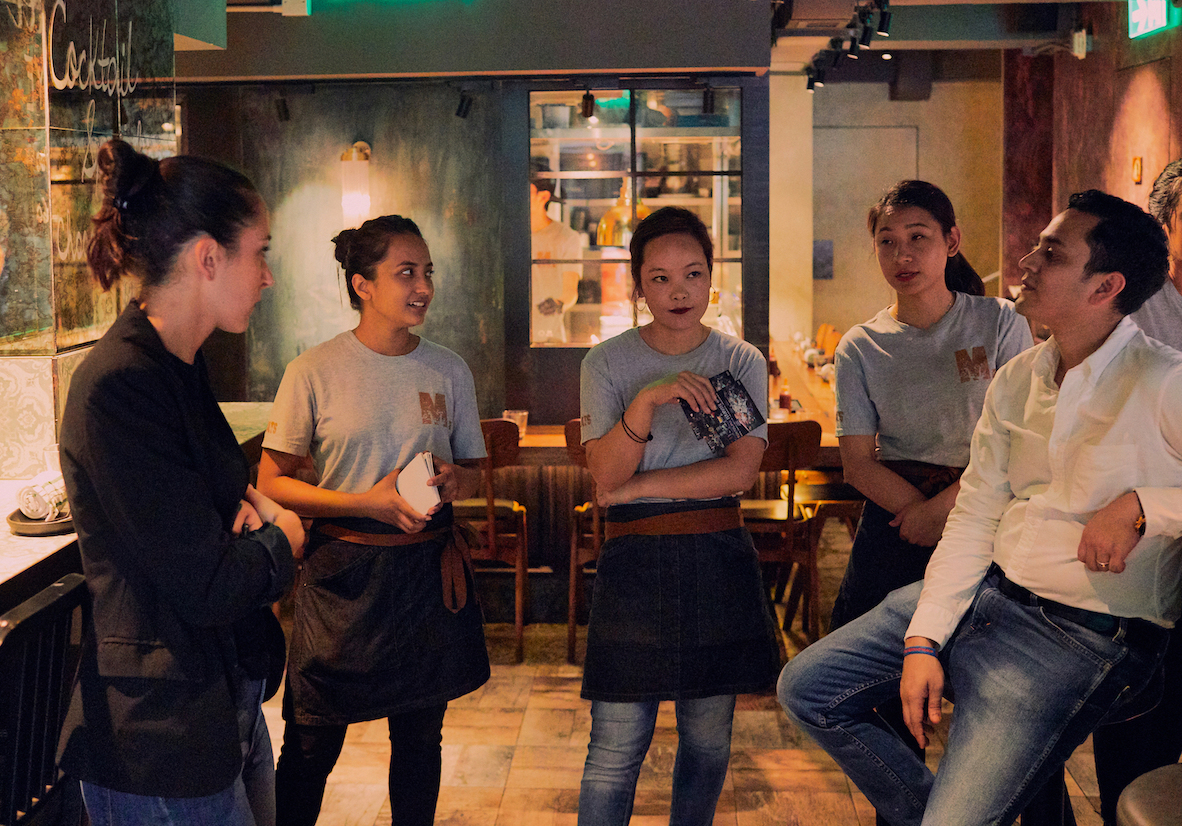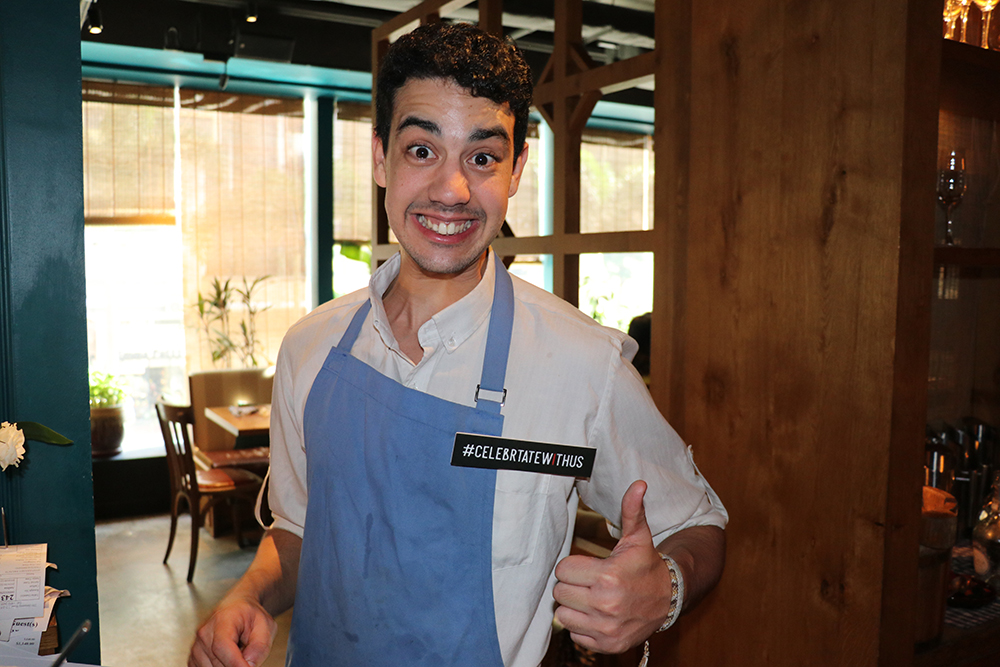
Bread & Butter #003
20th November 2019
Pirata Group on The Importance of Training

Why is training so important to Pirata Group?
Here at Pirata Group we take training very seriously. The right training provides new staff members with the confidence and knowledge to do their job as though it were second nature, therefore allowing more time to spend on a personal level with our guests.
Why do we have trainers?
Trainers ensure the future of each outlet and our company as a whole.
All members of our staff will have been through the hands of the trainers at some point.
The three main beneficiaries of a training culture are our staff, our guests and our company:
Staff –Opportunities are created for promotion as the company grows and a higher level of job satisfaction is achieved, resulting in less staff turnover. The ultimate effect of bad or no staff training is uninformed, poor service, inferior food and drink and guests who will not return.
Guests –Service standards are improved, guests are offered more choice, and staff can be approached to share information. This contributes to enhancing the overall guest experience.
Company – Knowledge and efficiency have a positive impact on the company as they help to drive sales, with profits maximized when our staff is trained to a high standard as quickly as we can. This improves the reputation of the outlet and increases its popularity.
When training members of staff what are your main objectives?
Most of the time training will be given to a brand new member of staff and the objective is simple. We take them from their position of lack of knowledge and, using the best tools and methods available, bring them to the required standard.
Ongoing training takes place with existing members of staff and is carried out when the need for training is established. Sessions do not necessarily have to be formal, but can be done informally at team briefings.
We remind our trainers that the job they now find so easy was difficult for them at the start. Remember when you were a small child and you were learning to tie your shoelaces? At first it was very hard and frustrating, and it was even more frustrating to watch all the other kids be able to tie theirs! Being in training is like this in many ways, frustrating at first but once you have mastered the basic principles you can go on to excel like the rest of your team-mates.
The first few weeks can be hard and it is important that the trainee pays attention and does what is asked of them. It will make their time at work so much easier and enjoyable.
Like an iceberg, nine tenths of training is hidden and takes place out of sight, it is only the final product that is actually seen.

How should a trainer ideally prepare for a training session?
There are a few pointers that can be considered before the session to ensure that it has the desired outcome.
Distance
During the training session your trainee should be at arms-length at all times throughout your training so that you can identify correct or incorrect responses and behaviour.
Preparation
Proper preparation prevents poor performance.
By arriving early, you will have time to set up, make sure you’ve got everything you need and practice before you start.
Warm Up
By starting training sessions with a recap of your trainees existing knowledge, you will help to stimulate their mind and get them prepared for your session.
Objective
By having a clear picture of what your trainee should be able to do by the end of the session, you can ensure that you avoid trying to fit in too many topics.
Incentive
What’s in it for me? To ensure they are engaged and focused, we explain to the trainee what they can expect to gain from putting the effort in during the training sessions.
Other Points To Note
Watch out for sensory overload! Give information in meaningful chunks; if in doubt call a break, as people all absorb information at different speeds. When mentioning critical points, it is always a good idea to repeat them at least three times so that the information is clearly understood. We find that visual examples are very useful and should be used wherever possible.

What are some of your preferred methods of training staff at Pirata Group?
Our preferred methods of training are role-plays, lectures and demonstrations.
Role-playing allows the staff to act out scenes and situations that they can expect to take place in a restaurant, in a light-hearted yet professional environment, where other team members can observe and are encouraged to contribute their constructive feedback afterwards.
Lectures should ideally last no longer than 20 minutes to ensure maximum concentration takes place during the training, and we aim to include a maximum of 7 points to be discussed. We have found that longer sessions tend to lead to a lack of focus, as the mind tends to wander. One of the main benefits of holding lectures is that they encourage trainees to ask questions.
Demonstrations are an effective way of executing ‘on the job’ training. This kind of training will usually take place over a period of time and in 3 stages. Stage one will be led by the trainer verbally explaining what is happening and then the trainer actually doing it. In stage two, the trainee will take the lead and explain the steps, while the trainer does the work, and finally in stage three the roles are totally reversed from stage one, where the trainee is now the one both saying and doing. This is a common form of training we use, which is also known as shadowing.
Do you ever use tests in training?
Many people see tests as a negative. They can be daunting and people believe that they will be punished if they “fail”. In the case of a new trainee they may even feel that their job is on the line if they don’t pass. This can put extra pressure on them that could have a negative effect on the result and on future training.
In reality this is rarely the case. We didn’t spend time and money training a new member of staff just to get rid of them because they haven’t remembered all of the ingredients of a particular dish.
There are actually many reasons that we use tests. By using tests we can find out how effective the training has been, highlight areas that need greater focus or re-training, provide opportunities to praise or reward the trainee, provide important repetition that aids memory, and re-emphasize the most important points of the training.
It is important that tests results are disclosed as quickly as possible and that feedback is given to the trainee.
If a re-test is required we will always point out the areas that the trainee needs to improve so that they know where they went wrong.
Practical tests can be even more useful as they give the trainee the opportunity to show that everything they have been taught is being put into practice. This is, after all, the whole point of holding training sessions.

How can asking questions lead to getting the best results?
One of the main weapons in the trainer’s arsenal is the question, but like most weapons they can be dangerous if not used correctly.
When done correctly, asking a question can enable you to keep your trainees attention. By asking questions you are able to check in on their understanding of the subject and create a space for further open discussion.
The two main types of questions are ‘closed’ questions and ‘open’ questions.
Wherever we can we avoid using closed questions. These are questions that lead to one-word answers and do not invite the respondent to elaborate on their answer in any way.
Open questions require the person answering the question to think a bit more and explain their answers. There will be times when the trainee is struggling to answer, and when this happens it is important to help them out rather than embarrass them which can complicate future training. It could be that they didn’t understand the question properly in the first place, so in this case we would try re-wording it.
“Knowledge has to be improved, challenged or increased constantly or it vanishes”

